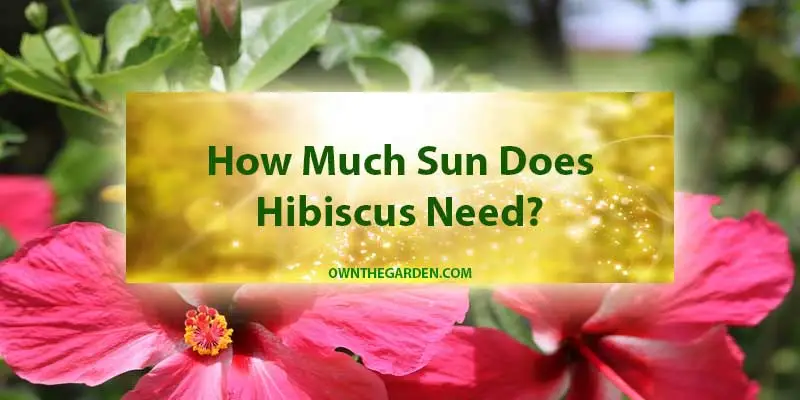Hibiscus is a beautiful flowering plant that can add a splash of color to your garden. But, if you don’t provide the right amount of sun, your hibiscus may not bloom as often or as brightly. To make sure your hibiscus gets enough sunlight to thrive, here are answers to some common questions about how much sunlight your flowers need.
Hibiscus plants are a beautiful addition to your summer garden, but they do require some sunlight. How much sun does hibiscus need?
Hibiscus needs 6-8 hours of direct sunlight per day. If you live in an area with hot summers and long days, you may be able to grow hibiscus in full sun; however, if you live in a cooler climate or have shorter days, it is best to give your hibiscus partial shade during the hottest part of the day.
Plants that receive too little light will become leggy and weak; over time this can lead to brown spots on leaves and eventually death!
Does Hibiscus Prefer Full Sun?
Hibiscus is a sun-loving plant. It needs at least 6 hours of direct sunlight per day and will thrive in full-sun conditions. Full sun is best for this plant, but it can also be grown in partial shade. Hibiscus will survive in some shade, but it won’t thrive there.
The more sunlight, the more flowers you’ll have.
Can Hibiscus Grow in Shade?
Hibiscus can grow in shade, but it may be difficult to tell if the hibiscus is getting enough light. If you have a hibiscus that is growing in shade, you’ll need to pay close attention to how the leaves are looking and how they’re behaving. A healthy hibiscus will produce many small leaves that are green with no yellowing or browning. If your plant has large leaves with discoloration, this could mean it’s not getting enough sun.
In addition to checking its coloration, you also want to make sure your plant isn’t leaning towards one side or another; if it does lean towards one side of the pot it could be an indication that its roots aren’t receiving adequate nutrients from being too far away from sunlight.
Where Does Hibiscus Grow Best?
Hibiscus is a versatile plant that will grow in both partial shade and full sun. However, when it comes to the best soil conditions for growing hibiscus plants, they need lots of sun.
The ideal location for hibiscus is an area with full sun exposure for at least six hours per day. If you have less than six hours of sunlight per day, your hibiscus will still grow well but maybe a little smaller than usual.
When selecting your planting site, pay close attention to drainage as well as temperature and humidity levels in your region. Hibiscus thrives in warm weather but does not like standing water or extremely humid conditions (like those found near bodies of water).
Can Hibiscus Get Too Much Sun?
Although hibiscus needs plenty of sunlight, too much can cause leaves to turn yellow and fall off. Leaves may become scorched, deformed, or curled up and twisted; the plant may develop brittle, stiff leaves.
Other symptoms of too much sun may include a discolored appearance or spots on the leaves, which may fade as the plant matures. The leaves may also appear to be wilted or dried out despite adequate water.
Signs Your Hibiscus Isn’t Getting Enough Sunlight
If you notice that your hibiscus is not getting enough sun, it’s likely there are several signs.
These signs include, but are not limited to:
- Leaves that are smaller than normal and pale in color
- Leaves turning brown or yellow, especially at the tips of the plant
- Twisted or curled leaves on the plant
- Veins on leaves that have turned brown instead of green
Conclusion
After reading this article, you should have a better idea of how much sun your hibiscus needs. If it’s looking pale or wilting in the afternoon, it might be time to move it to an area that gets more light. And if you like watering outside with hose attachments or sprinklers, remember that they can cause burns on leaves!


